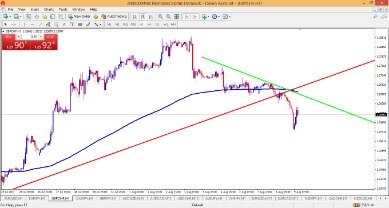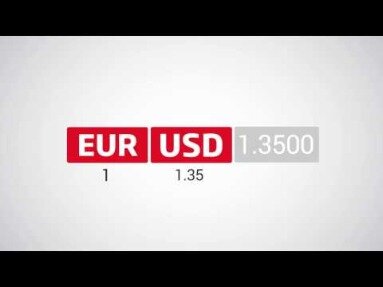
The cryptocurrency world has a long way to go regarding the regulations jurisdictions create around it. And each new (or updated) law directly impacts trading sentiment. What the trading token stands for, i.e., the problem it solves and the potential of its growth, greatly influences the risk of trading with it. The more reputed and established the token, the lower the risk of trading with it. It’s about finding the right balance between managing the maximum drawdown risk and maintaining a favorable risk/reward ratio.
It measures the long-term profitability of a trading or investing strategy. Positive expectancy is more or less like the ultimate objective of all trading initiatives. As such, even though the risk/reward ratio is favorable, the strategy’s overall risk may be too high. One way around this is to use a narrow stop-loss and avoid the potential loss of the maximum drawdown. Trade A has a high risk reward ratio but only a 5% chance of being profitable. Trade B has a smaller risk reward ratio but has a much better chance of being a winner at 90%.
Reasons Why You Always Need to Have a Risk-to-Reward Ratio
Such as not entering a trade that turns out to be a good one. The cons of having the ratio is that, at times, your win-loss ratio is not always accurate. Having this ratio in mind can also prevent you from opening a trade. If you lose only 5% of your capital (by setting a stop loss), you only need to make a 5.26% profit on your 95% remaining balance to recoup your original loss. For those looking to avoid the maths, another way to calculate the risk reward ratio is to use a risk reward calculator, which you can find online.
Breaking Up Is Hard to Do: New York Dealer Rob Dimin on Flying Solo and the Risks and Rewards of Shaping His Own Program – artnet News
Breaking Up Is Hard to Do: New York Dealer Rob Dimin on Flying Solo and the Risks and Rewards of Shaping His Own Program.
Posted: Wed, 12 Jul 2023 20:31:49 GMT [source]
For example, if you are risking $10 with the goal of making $20, then the risk and reward ratio, in this case, is 10/20, which is equivalent to ½. In crypto markets, it’s common for https://trading-market.org/best-stock-brokers-in-the-us-for-2021-2020/ large cryptos to swing 10-20% in a day. Crypto traders have to be attentive to news in the crypto world that could trigger a rapid appreciation or depreciation in crypto prices.
How to Calculate the Reward to Risk Ratio?
If you have a win rate of 80% (8 out of 10 trades are successful), you can still wipe out your entire balance on one bad trade. If you apply R/R calculations, you can minimize your trade risk and set a stop loss that would allow you to https://currency-trading.org/education/flags-and-pennants-in-forex-trading/ recover your initial loss. This makes it possible to set up a profitable system even with a smaller win rate. It is arguably more important than the “win rate” because it can be applied to all trades, regardless of your trade history.

Using the R/R ratio, you can increase your profitability by setting strategic stop losses and take profit orders. After calculating the risk/reward ratio, the trader should evaluate whether it suits their trading strategy https://day-trading.info/top-4-similar-websites-like-finotrade-com-and/ and risk tolerance. That said, one cannot rely solely on the risk/reward ratio for cryptocurrency trading. Traders should use it with other risk management strategies, trading plans and discipline to succeed.
What does the Reward/Risk Ratio tell You?
While investors usually are looking to profit from their investments, there’s the potential to lose some or all the money invested as well. The risk/reward ratio is a tool investors can use to compare the potential profits and losses of an investment. The risk/reward ratio is often used as a measure when trading individual stocks. The optimal risk/reward ratio differs widely among various trading strategies. Akin to the win rate, the loss rate is the unprofitable percentage.
In general, it’s better to make trades with low risk/reward ratios because that implies the investments will produce more profits than losses. This allows the risk/reward ratio to provide a quick insight into whether an investment is worth making. This is popular with day traders who want to move in and out of the market quickly as it lets them make decisions about how much to risk to generate a potential gain. To calculate the risk to reward ratio, you’ll first have to derive each of them separately. As a general rule of thumb, it is wise to first address your assumed risk before turning to your prospective reward.
How to Find and Use the Best Risk Reward Ratio Like a Professional Trader
It would be best if you didn’t rely on the universal R/R ratio in your trading decisions. For every trade, you should determine how many you can afford to lose in a particular trade and how many you can lose today before you finish your trading. Risk/reward ratio is just one tool traders can use to analyze investment opportunities. Day traders often use another ratio, the win/loss ratio to think about their investments. This ratio measures how many of an investor’s trades turn a profit compared with how many generate a loss.
After all, having many successful trades and losing all your profits with just one bad trade doesn’t make sense. Entry point and risk/reward management are both important aspects to trading that any trader should become familiar with. Mastering these two processes will allow one to maximize their own growth and revenue in the trading world. In the markets, there are always going to be opportunities to make money.
Similar to forex trading, the share market is equally affected by fundamental factors. Economic indicators such as news releases, earnings reports and a country’s economic stability can cause a company’s share price to plunge. Alternatively, a company’s stock price can soar after a positive earnings report.
- The risk-to-reward ratio helps determine how much you can lose on a losing trade.
- I’m not saying RRR targetting and bracket orders don’t work, but I am saying test everything!
- The bigger the possible loss, the worse it’s for a trader because sometimes any person can have a series of bad trades.
- Avoid emotional decisions because they can change your preset financial goal and lure you into making inconsistent bets.
- If there is one thing the cryptocurrency ecosystem is infamous for — apart from the hacks and rug pulls — it is how volatile its trading scene is.
Some say it’s all about a trading strategy; others point to a mindset and trading psychology. There’s a crucial aspect of the trading routine, and probably, the most important one, called a risk/reward ratio. Investors determine the potential risk and reward of an investment by setting profit targets and stop-loss orders. A stop-loss lets you automatically sell a security if it falls to a certain price.
Importance of Risk to Reward Ratio
The crosshair will emerge, and now you can click and drag the cursor to look for points of profit or loss. There is a simple risk-to-reward ratio formula that you can use to calculate the ratio. We introduce people to the world of trading currencies, both fiat and crypto, through our non-drowsy educational content and tools. We’re also a community of traders that support each other on our daily trading journey. For this reason, many investors use other tools to account for things like the likelihood of achieving a certain gain or experiencing a certain loss. Because if you take trades that have a small RRR you will lose money over the long term, even if you think you find good trades.

In a risk-reward ratio, risk is the amount of money that could be lost in the investment. In a stock purchase, that amount is the actual capital value, or the actual dollar amount, that could be lost. The information contained in this post is solely for educational purposes and does not constitute investment advice. The risk of trading in securities markets can be substantial. You should carefully consider if engaging in such activity is suitable for your own financial situation.